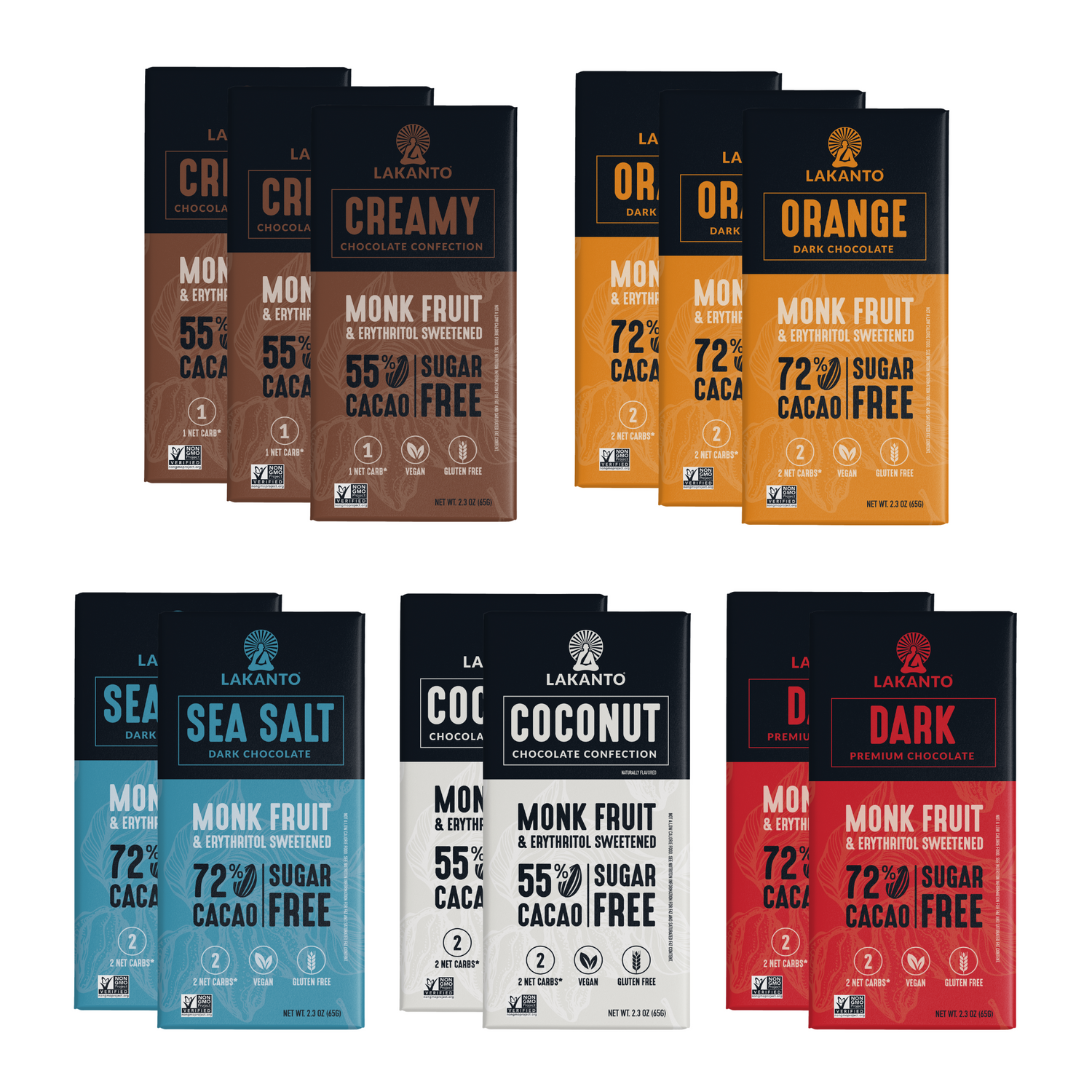
Today, everyone is seeking for the perfect ‘diet.’ In America, the popular diet is low carb, while in Japan it is high carb. In both countries, people are losing weight on these diets. But why? They are completely opposite!
Both diets avoid fructose!
Fructose is found in most fruits and some vegetables. But it is more abundantly found in refined sugar: making up 50% of refined sugars molecular structure. Before the mass production of refined sugar, most fructose consumption came from fruits and veggies. In fact, fructose is an indication of nutritionally rich food. These foods contain low amounts of fructose and it is hard to reach dangerous levels of fructose from those foods. Fruits and veggies contain fiber which makes you feel full, so you do not have the tendency to overeat.
However, with sweets, or any high fructose product, you tend to overeat. Fructose is called an empty calorie. It provides little to no energy or benefit to the body. High levels of fructose turn into fat, especially if consumed with high calorie foods. Fructose is processed through the liver. The liver attempts to convert fructose into glucose. It can easily do this with low amounts of fructose, but high amounts are much more difficult to process.
Between 1970 and 2000, there was a 25% increase in available processed or added sugars. Towards the end of that range, the average person consumed 79 grams of added sugar. Soft drinks are another large source of fructose intake. From 1942 to 2000, soft drink consumption rose from about 2 servings per week to about 2 servings per day!
As fructose consumption has increased, the negative effects of fructose have become apparent. When fructose is broken down, three by-products are created: triglyceride, uric acid, and free radicals. Triglyceride is a form of fat that builds up in liver cells and damages liver functions. Also, triglyceride in the bloodstream contributes to fatty plaque in the artery walls. Uric acid turns off the production of nitric acid which helps protect artery walls. Uric acid can lead to gout and high blood pressure. Free radicals are known to damage cell structure, enzymes, and genes. Free radicals can also cause cell inflammation, especially in the brain.
With these by products and fructose itself, fructose is believed to be leading factor of several serious diseases.
- Obesity
- Type 2 diabetes
- Heart disease
- Cancer
It is also known to seriously effect several key body functions.
- Insulin resistance
- Leptin resistance (leptin is a hormone that regulates energy intake)
- Impaired composition of blood lipids
In many ways, fructose can be compared to ethanol. Fructose does not slow the central nervous system like ethanol, but it has the same long-term toxic effects. There are three negative metabolic impacts fructose and ethanol share.
- When you consume more calories than your body needs at a given time, fructose and ethanol overwhelm the liver and drive the transformation of excess energy into fat.
- Fructose and ethanol create a lot of reactive oxygen species (ROS), also known as free radicals. If your diet does not have enough antioxidants, the amount of ROS will increase. A rise in ROS leads to fatty liver disease, liver damage, accelerated aging, and oxidative stress.
- When the brain is exposed to fructose repeatedly and consistently, dopamine receptors are altered creating a fructose addiction. This alteration causes increased food consumption and weight gain.
The best way to avoid fructose is to dramatically cut down on all common forms of sugar. Another way is to find a natural sugar replacement that contains no fructose or glucose. Natural sweeteners should act similarly to fruits and contain low or no fructose. A natural sweetener that has no down side is monk fruit. Lakanto Monk Fruit Sweetener is a 1 to 1 sugar replacement that has no fructose at all!
References
Bray, G. A. (2007, October 01). How bad is fructose? | The American Journal of Clinical Nutrition | Oxford Academic. Retrieved from https://academic.oup.com/ajcn/article/86/4/895/4649668
Gunnars, K. (2018, April 23). Is Fructose Bad for You? The Surprising Truth. Retrieved from https://www.healthline.com/nutrition/why-is-fructose-bad-for-you#section4
Gunnars, K. (2018, May 31). Is Fruit Good or Bad for Your Health? The Sweet Truth. Retrieved from https://www.healthline.com/nutrition/is-fruit-good-or-bad-for-your-health#section6
Skerrett, P. J. (2011, April 26). Is fructose bad for you? Retrieved from https://www.health.harvard.edu/blog/is-fructose-bad-for-you-201104262425
University Health News. (2018, April 09). Is Fructose Bad for You? Why Fructose is Worse than Sugar. Retrieved from https://universityhealthnews.com/daily/nutrition/is-fructose-bad-for-you-why-fructose-is-worse-than-sugar/


